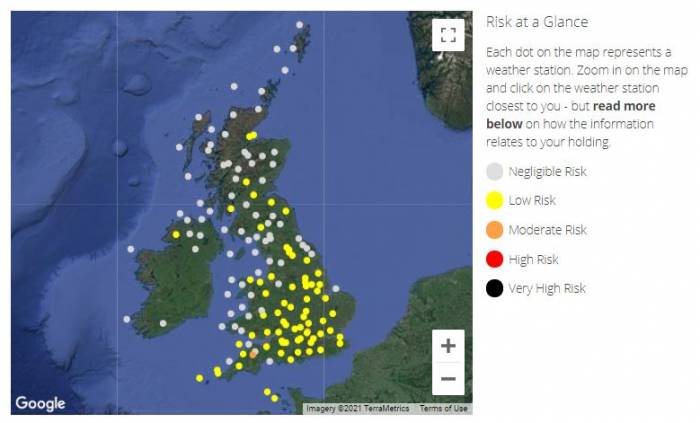The SCOPS Nematodirus Forecast will run again in 2025. Please check back from late February onwards.
The picture shows a snapshot from the forecast early on in the season, with orange dots indicating moderate risk areas. Once live, the map will be updated daily as the situation with nematodirus changes with the weather. You can view the data captured in previous years here.
Understanding nematodirus
Nematodirosis is a particularly nasty disease in lambs, causing a high number of mortalities and stunting the growth of many others. It is caused by the Nematodirus battus worm, which has a different lifecycle to other sheep worms. Under certain climatic conditions it can strike very quickly, with little or no warning. The main difference in the lifecycle of Nematodirus battus compared with other parasitic worms is that development to infective larvae takes place within the egg and infection passes from one lamb crop to the next year’s crop. Cold weather delays hatching so when we get a sudden change in temperature it can trigger a mass hatch. If this coincides with the time when lambs are starting to take in significant amounts of grass (over about six weeks old), the result can be devastating. Find out more here.
